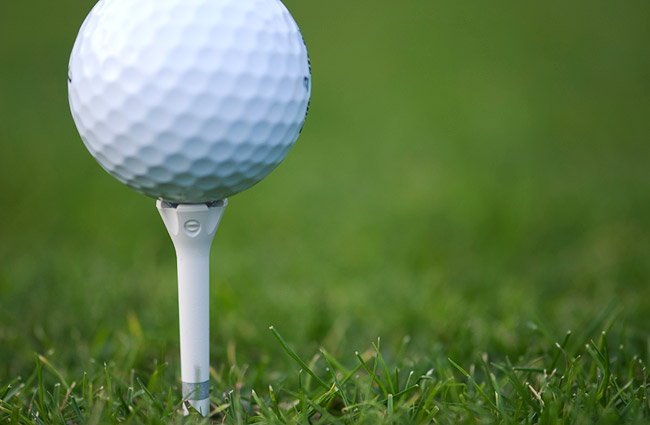The First Tee – Safeway Open

This Week
The Silverado Resort and Spa (North) has hosted the Safeway Open (formerly frys.com Open) for the past five years with winning scores sitting between -14 and -18 and the cut below par all five years (-1 to -3). Like all swing season events, the field is a mixed bag with some very elite players (JT, Cantlay), up-and-comers, and the tour fill-ins; that means ownership could be pretty concentrated, so make sure to check the FGI ownership projections and Jeff’s weekly email to members.
The Course
Silverado is a par-72 that’s very short, only 7166 yards, although the fairways here are very narrow – just 24 yards across at the 300-yard marker, on average. Golfers don’t seem to care though, as this course sees one of the highest averages in terms of distance (302 yards last year) and only a little over 50% of fairways are hit; that doesn’t impact scoring much, as the overall birdie or better % is a strong 21.3% with an average of 3.75 birdies/round.
Golfers can uncork driver off the tee because there’s not much off the fairway to be a concern: the rough is thin and short, and although the course is lined with trees, they’re pretty loose and can even be punched over off the tee. There are few bunkers and water is only possible at two of the par-3s, so look for the big hitters off the tee this week.
The course has four par-5s which are incredibly easy – making birdie is obviously good but with a combined 33 big birds on the par-5s last year, eagles are going to be needed – and they’re all relatively short, with none longer than 575 yards; they’ll mostly be gettable in two from longer hitters, so target eagle makers and strong par-5 players.
Approach shots will typically be in the shorter range given the setup of the course as there’s only one par-4 that plays outside 450 yards (at a HUGE 458), but the par-3s and the approach shots on the par-5s require long irons. When looking at approach dispersions, 50-125 and 200+ should be highlighted this week.
Those approach shots will be hitting into slow poa annua greens which are pretty receptive – greens in regulation are hit at a high clip, ~67% – and misses aren’t terribly costly. There are some tough greenside bunkers which could pose a challenge, but scrambling from the rough/fringe is easier than most courses given the slowness of the greens. You can usually roster poor putters here because the slow poa makes everyone pretty bad: this is one of the toughest courses on tour on putts inside 10’ (86%) and is a little tougher than average at one-putts.
Comparable courses/events:
TPC San Antonio (Valero Texas Open) – The inimitable Ben Coley (@BenColeyGolf) pointed out a ton of leaderboard overlap: Brendan Steele has wins at both and there are a number of players with top-10 finishes at both (Kevin Tway, Steven Bowditch, etc.) Both courses have tight fairways, similar scoring averages and are par-72s, but that’s about the only thing they have in common outside of leaderboards, as San Antonio is a Bermuda course that plays 300 yards longer.
Nine Bridges (The CJ Cup) – Similar setups in terms of par and length (72, 7196 yards with only two par-4s outside 450 yards) and easy greens. Scoring is also pretty close, although the CJ Cup is a no-cut event with bentgrass greens.
STATS
The Strokes Gained stats to focus on in order (not including Tee to Green):
- Approach
- Off the Tee
- Putting
- Around the Green
Counting stats to focus on in order:
- Birdie or Better %
- Approach Shots: 50-125 Yards, 200+ Yards
- Par-5 Scoring
- Carry Efficiency
- Putting Inside 10’
Top-Tier Golfers
Collin Morikawa ($9400): He missed the cut here in 2017 as an amateur, but he missed it on the number as he went 74-69 and really…Morikawa in 2017 is not the golfer he is today. The Morikawa of 2019 has yet to miss a cut on the PGA Tour, picking up four top-25 finishes in only nine events which includes THREE top-10s which also includes a win as a rookie.
As always when talking about the Big 3 Rookies (Morikawa, Matthew Wolff and Viktor Hovland), small sample size is a big factor when looking at the statistics; Morikawa only had 32 measured rounds in the 2019 season but if he qualified he would be a monster, as he gained a huge 1.227 strokes from tee to green. One of the ways Morikawa stands out is by his bullseye accuracy off the tee, as he hit 72.1% of fairways although his lack of distance is a bit of a concern.
The young golfer had the fifth-best proximity to the hole (33’4”) and managed to make birdie or better on 25.52% of holes played, although he was much better on the par-3s and -4s than par-5s which isn’t ideal. He also played much easier courses than most golfers, so that average is a bit inflated.
Hideki Matsuyama ($10500): Silverado isn’t a course where being an elite putter isn’t a necessity, which is demonstrated by Hideki’s finishes of T17 and T3 in 2016 and 2015 respectively. Hideki is about the furthest thing from a good putter – he ranked 97th last year – but is elite everywhere else:
- 3rd in SG: Tee to Green
- 26th in SG: Off the Tee / 31st in Distance
- 5th in SG: Approach
- 7th in Birdie Average (4.30) which is always impressive with a player who plays the majors
- 16th in Proximity outside 200 yards / 6th in Proximity from 50-125 yards
In this field especially, Hideki is underpriced even as the fourth-highest priced golfer and will just need the putter to cooperate enough to score in bunches; scoring in bunches is a thing Hideki can do, as he ranked 9th in overall BoB% last year and 16th in par-5 BoB%.
Value Golfer (below $8000)
Kevin Chappell ($7200): You’d have to go back to his 2018 stats for a decent look at what type of player Chappell is given he missed the bulk of the 2019 season due to injury, but he’s flashed some fine play since coming back – although his 59 at the Greenbrier was mostly due to putting. He’s missed the cut here twice but hasn’t played since 2016, and he’s picked up a T29 at the CJ Cup and has picked up four top-25s (including a win and a runner-up) at the Valero Texas Open.
Chappell is a big-hitting player that excels from tee to green (34th) thanks to his play off the tee (11th). In 2018 he ranked 10th in distance and 53rd in SG: Approach, with strong proximity on long iron shots (T40 outside 200) although he couldn’t back that up with birdie numbers due to his poor putting. Chappell is always a horrific putter – until he’s not, like at the Greenbrier! – and that’s hurt him tremendously, in terms of making bogey, but he’s managed to convert birdie putts over 30% of the time which puts him in the above-average group.
He made birdie or better on 21.55% of holes in 2018 – 18.36% on par-4s and 45.13% on par-5s – and averaged 3.78 birdies per round. He may see some ownership (10-14%) given his price tag and from all the positive attention he got at the Greenbrier, but his scoring and big hitting make him worth it.
Cam Champ ($7400): One of the most dominant players off the tee thanks to his incredible distance, Champ checks a few of the boxes needed to succeed here, if you don’t look too closely:
- 6th in SG: Off the Tee (1st in Distance)
- 12 Birdie Average (22nd) / 63rd in Holes per Eagle (152)
- 19th in Birdie or Better % / 34th in Par-5 Birdie or Better %
Unfortunately, Champ is pretty piss-poor statistically the rest of the way, as he’s a bottom-tier (100th or worse) player in SG: Approach, Around the Green AND Putting. Even playing that poorly though, Champ still made ten cuts last year with two top-25s, and he’s coming off a T28 last week at Sanderson; he finished T25 here last year.
He’s a good bet for DFS due to his high-volatilty scoring, and just needs to make the cut to put up a good DraftKings score.
You can follow me on Twitter @adalyfrey and good luck this week!





